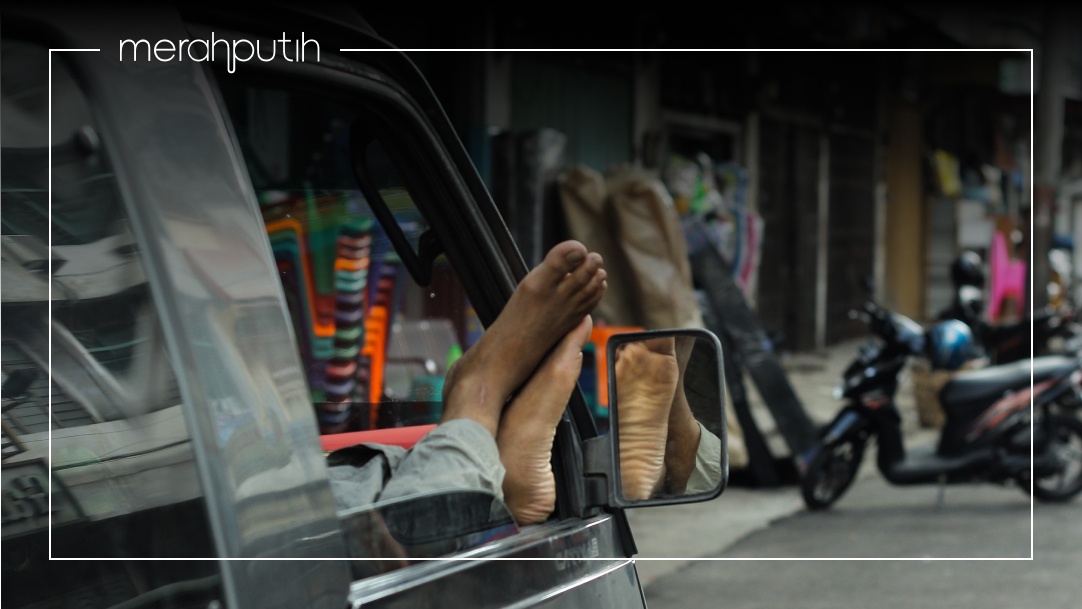Bali may not seem much like paradise when you see the viral videos of traffic on the island. From news about the standstill on the toll road causing people to leave their cars and walk to the airport, to influencers sharing the nightmarish congestion on the Canggu shortcut, it’s now a known fact that you can’t avoid traffic in Bali. However, this shouldn’t be a deterrent to you enjoying your vacation. Understanding the causes of traffic and how to best navigate it will allow you to still make the most of your time in the island of the gods.
Reasons behind traffic in Bali
A number of factors contribute to the heavy traffic on the island.
Influx of tourists
The lack of tourism during the pandemic took a huge toll on Bali’s economy. To recover, the government has opened up the island to more tourists. In the first seven months of 2024 alone, 3.89 visitors set foot in Bali, boosting GDP to an approximated 6.05%. However, this doesn’t come without its consequences. The rise in number of tourists means that infrastructure also has to keep up.
Development in major areas
In order to accommodate visitors, Bali is greenlighting the development of real estate like never before. Construction sites are popping up at almost every turn in Bali’s popular areas, slowly moving along the coast from Kuta to Legian to Seminyak to Canggu. While accommodation and entertainment are much needed, these new buildings are eating into Bali’s roads, which are already narrow to begin with. This exacerbates traffic in Bali.
Increase in number of online taxi cars and motorbikes
In addition to infrastructure, transportation also needed to rise to the occasion. Online ride-hailing services such as Grab and Gojek have certainly opened the door to more job opportunities for locals, with thousands of online taxi drivers carrying passengers daily in cars and on bikes. However, the increase of transportation on the roads have contributed to worse congestion.
High season tourism
As an island heavily reliant on tourism, Bali’s traffic varies depending on the season. It tends to be more packed during public holidays, long weekends, and school breaks. The MICE industry is also prominent in Bali, so international events which last over the span of a few days, such as G20 and various music festivals, will cause an increase in traffic as well.
What is being done about traffic in Bali?
In an attempt to minimize traffic, the government has carried out several initiatives.
Development of LRT
To get transport off the roads, Bali is developing a Light Rail Transit (LRT) in four phases. The first phase is 16 kilometers long, starting at the airport and ending in Cemagi and passing through the areas of Kuta, Seminyak, and Berawa.
The LRT’s second phase will connect the airport to Jimbaran, Udayana University, and Nusa Dua. The third phase will start at Kuta and end in Denpasar, stopping at Sesetan, Renon, and Sanur. Finally, the fourth phase will connect Renon to Gianyar, which includes the areas of Sukawati and Ubud.
Development of new tourist areas
The Badung region is currently the epicentre of major tourism activities in Bali, with Uluwatu and Ubud gaining traction as of late. Most of the island’s traffic is found in these regions. With the development of new tourism areas towards Tabanan, Mengwi, and north Bali, including the new international airport in Buleleng, traffic in Badung is hoped to reduce.
Understanding Bali traffic patterns
While it’s impossible to avoid traffic completely, knowing when and where traffic is likely to start is a step in navigating the island like a pro.
Rush hour
The morning rush hour in Bali is between 7:30 to 9:30 in the morning when everyone starts their day. This is when kids are dropped off at schools, people come into work, or some people go to the gym and various wellness centres.
The evening rush hour starts at 16:30. In Bali, this is not only when students let out of school and employees are done for the day. It’s also when people start making their way out to various beaches to catch the sunset or surf. The traffic should die down between 17:00 to 19:00 once everyone has reached their destinations, whether that’s home, the beach, or in restaurants for dinner.
Areas to avoid
During rush hour, the road in entertainment centres like Canggu, Seminyak, and Legian, are the most heavily congested. Sunset Road and the Bypass are also known to come to a standstill. Additionally, areas around major tourist spots like Tanah Lot, Uluwatu Temple, Garuda Wisnu Kencana cultural park, and culinary hotspots like Jimbaran seafood will also come up red on Google Maps.
How to beat traffic in Bali
Don’t let the packed roads take away from your vacation. Here are some travel tips for you so you can still make the most out of your time in Bali.
Plan ahead
Spontaneity is fun to an extent, but in Bali, it may land you in the middle of rush hour traffic. Use Google Maps or Waze to estimate travel time, get ahead of traffic, or plan out different routes.
Be in your desired area early
Let’s say you want to catch the sunset in Uluwatu tonight, but you’re staying in Seminyak. Beat the sunset chasers at their own game by being in the Uluwatu area by 16:30. You can hang out at a café or chill at a beach club while enjoying golden hour. This way, you’re guaranteed to not miss the sunset, which usually starts around 18:30.
Take the longer route
Sometimes, traffic in Bali can be avoided by taking an alternative route. This is especially helpful when roads deemed as “shortcuts” are also getting congested beyond measure. If your navigation app sends you on a longer route, think of it as an adventure – an opportunity to see different sights.
Accommodation hop
If you’re spending an extended amount of time in Bali, moving between areas might be the best option. Choose two or three areas to spend two to three days in so that you can properly explore each location before moving on to the next. This also ensures you don’t tire yourself out traveling long distances and enduring traffic.
While Bali is rich with culture and natural beauty, exploring the island may prove inconvenient with recent developments in tourism. However, traffic in Bali shouldn’t be the reason your holiday is ruined. By understanding the traffic patterns and following the above tips, your island adventure is still very much within reach!
FAQ
A number of factors contribute to the heavy traffic on the island. The influx of tourists post-pandemic has led to an increase in real estate development. These construction sites are eating into Bali’s already narrow roads. Additionally, an increase in online taxis and motorbikes is contributing to congestion.
The morning rush hour in Bali is between 7:30 to 9:30 in the morning when everyone starts their day. This is when kids are dropped off at schools, people come into work, or some people go to the gym and various wellness centres. The evening rush hour starts at 16:30. In Bali, this is not only when students let out of school and employees are done for the day. It’s also when people start making their way out to various beaches to catch the sunset or surf.
Don’t let the packed roads take away from your vacation. Here are some travel tips for you so you can still make the most out of your time in Bali.
– Plan ahead
– Be in your desired area early
– Take the longer route
– Accommodation hop
The Badung region is currently the epicentre of major tourism activities in Bali, with Uluwatu and Ubud gaining traction as of late. Most of the island’s traffic is found in these regions.



